Table of Contents
Guide
Level: U Word Count: 4,472 Words 100th word: century
Content Area Vocabulary: Read the list. What do these words mean?
average
compass
defense
degrees
equipment
offense
revolution
scores
speed
weightBuilding Background Knowledge
Before reading a book, it is important to tap into what your child or students already know about the topic. This will help them develop their vocabulary, increase their reading comprehension, and make connections across the curriculum.
| Look at the cover of the book. What will this book be about? |
| What do you already know about the topic? |
| Lets study the Table of Contents. What will you learn about in the books chapters? |
| What would you like to learn about this topic? Do you think you might learn about it from this book? Why or why not? |
| Use a reading journal to write about your knowledge of this topic.
Record what you already know about the topic and what you hope to learn about the topic. |
| Read the book. |
| In your reading journal, record what you learned about the topic and your response to the book. |
| Complete the activities at the end of the book. |
SPORTS
Kay Robertson
 rourkeeducationalmedia.com rourkeeducationalmedia.com |  Scan for Related Titles Scan for Related Titles
and Teacher Resources |
2014 Rourke Educational Media All rights reserved. No part of this book may be reproduced or utilized in any form or by any means, electronic or mechanical including photocopying, recording, or by any information storage and retrieval system without permission in writing from the publisher. www.rourkeeducationalmedia.com PHOTO CREDITS: , 44; Lokibaho Edited by: Jill Sherman Cover design by: Nicola Stratford, bdpublishing.com Interior design by: Cory Davis
Library of Congress PCN Data STEM Guides to Sports / Kay Robertson.
| p. cm. -- (STEM Everyday) Includes index. ISBN 978-1-62169-847-0 (hardcover) ISBN 978-1-62169-742-8 (softcover) ISBN 978-1-62169-950-7 (e-Book) Library of Congress Control Number: 2013936452 | Also Available as:  |
Rourke Educational Media Printed in the United States of America,
North Mankato, Minnesota

rourkeeducationalmedia.com customerservice@rourkeeducationalmedia.com PO Box 643328 Vero Beach, Florida 32964 Table of Contents INTRODUCTION Do athletes and coaches use math? Can you play sports without doing math?

Well, for one thing, mathematics plays a large part in how winning is determined. But in the relationship between math and sports, scores are just the tip of the iceberg. In fact, it wouldnt be unreasonable to say that sports are pure math. Mathematics in motion! STEM in Action ? At the end of a hockey game, the winning team has a score of 7 and the losing team has a score of 4, how many points did the winning team win by? Just subtract the smaller number from the larger number: 7 4 = 3 The winning team won by 3 points!

MATH IN BASEBALL In 1858, a man named Henry Chadwick wrote the rule book for baseball. The rules Chadwick recorded have changed slightly over the years, but the game of baseball is still very much the same as it was in the 19th century.
 Cooperstown, New York is the location of Doubleday Field and the National Baseball Hall of Fame.
Cooperstown, New York is the location of Doubleday Field and the National Baseball Hall of Fame. STEM in Action ? It is believed that the first game of modern baseball was played in 1845 in Hoboken, New Jersey.
 Cooperstown, New York is the location of Doubleday Field and the National Baseball Hall of Fame.
Cooperstown, New York is the location of Doubleday Field and the National Baseball Hall of Fame. STEM in Action ? It is believed that the first game of modern baseball was played in 1845 in Hoboken, New Jersey.
Using that date as a starting point, can you figure out how old baseball is? Lets assume that the year you are reading this book is 2014. Now all you have to do to find the answer is to subtract the smaller number from the larger number: 2014 1845 = 169 Baseball is about 169 years old!  . The team playing defense has 9 players on the field in the following postitions: pitcher, catcher, first baseman, second baseman, third baseman, shortstop, right fielder, center fielder, left fielder. Meanwhile, the team playing offense sends batters to home plate. The batters attempt to hit the balls thrown by the pitcher to the catcher. The distance from the pitchers mound to home plate is 60.5 feet (18.44 meters).
. The team playing defense has 9 players on the field in the following postitions: pitcher, catcher, first baseman, second baseman, third baseman, shortstop, right fielder, center fielder, left fielder. Meanwhile, the team playing offense sends batters to home plate. The batters attempt to hit the balls thrown by the pitcher to the catcher. The distance from the pitchers mound to home plate is 60.5 feet (18.44 meters).
Professional pitchers are capable of throwing a baseball at incredible speeds. Much of the time, these pitches reach velocities of over 90 miles per hour (145 kilometers per hour)! 
 If this boy delivers a pitch that travels at 60 miles per hour (97 kilometers per hour), how quickly will it reach the batter? STEM in Action ? If a baseball is traveling at 90 mph, how long does it take to travel 60.5 feet? It is important to understand that we are comparing a very large value (the speed of the ball) to a much smaller value (the distance from the pitchers mound to home plate). In order to calculate a sensible answer, youre going to have to convert some numbers. In one mile, there are 5,280 feet. How many feet are there in 90 miles? 90 5,280 = 475,200 So a baseball traveling at 90 mph is traveling at 475,200 feet per hour! As you can imagine, a baseball traveling at that speed wont take very long to reach the catchers mitt. In fact, its pointless to talk about it in terms of a measurement per hour.
If this boy delivers a pitch that travels at 60 miles per hour (97 kilometers per hour), how quickly will it reach the batter? STEM in Action ? If a baseball is traveling at 90 mph, how long does it take to travel 60.5 feet? It is important to understand that we are comparing a very large value (the speed of the ball) to a much smaller value (the distance from the pitchers mound to home plate). In order to calculate a sensible answer, youre going to have to convert some numbers. In one mile, there are 5,280 feet. How many feet are there in 90 miles? 90 5,280 = 475,200 So a baseball traveling at 90 mph is traveling at 475,200 feet per hour! As you can imagine, a baseball traveling at that speed wont take very long to reach the catchers mitt. In fact, its pointless to talk about it in terms of a measurement per hour.
Rather, a baseball traveling at that speed will reach home plate in a matter of seconds.  STEM in Action ? How many seconds are there in one hour? There are 60 minutes in an hour, and 60 seconds per minute, so: 60 60 = 3,600 There are 3,600 seconds in one hour! If a baseball is traveling at 475,200 feet per hour, how many feet is it covering per second? You can find out by dividing the speed of the baseball per hour by the number of seconds in an hour: 475,200 3,600 = 132 The baseball is traveling at a speed of 132 feet per second! How long will it take a ball traveling at that speed to go 60.5 feet from the pitchers mound to home plate? You can find out by dividing the distance by the speed: 60.5 132 = 0.4583 A ball thrown at 90 miles per hour reaches home plate in less than half a second!
STEM in Action ? How many seconds are there in one hour? There are 60 minutes in an hour, and 60 seconds per minute, so: 60 60 = 3,600 There are 3,600 seconds in one hour! If a baseball is traveling at 475,200 feet per hour, how many feet is it covering per second? You can find out by dividing the speed of the baseball per hour by the number of seconds in an hour: 475,200 3,600 = 132 The baseball is traveling at a speed of 132 feet per second! How long will it take a ball traveling at that speed to go 60.5 feet from the pitchers mound to home plate? You can find out by dividing the distance by the speed: 60.5 132 = 0.4583 A ball thrown at 90 miles per hour reaches home plate in less than half a second! 

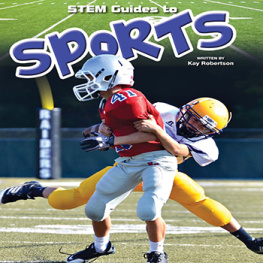

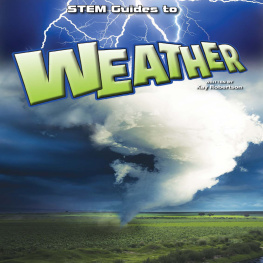
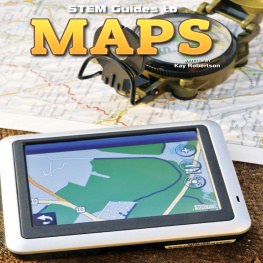
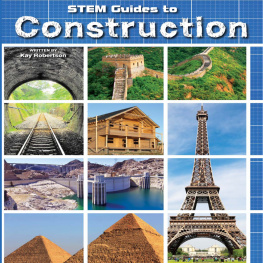


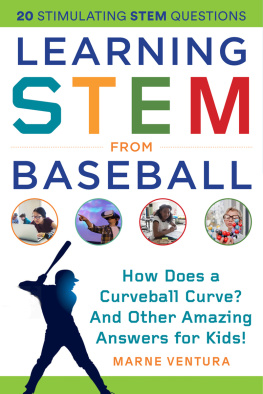






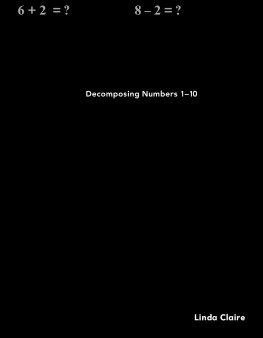

 Kay Robertson
Kay Robertson  rourkeeducationalmedia.com
rourkeeducationalmedia.com Scan for Related Titles
Scan for Related Titles
 rourkeeducationalmedia.com customerservice@rourkeeducationalmedia.com PO Box 643328 Vero Beach, Florida 32964 Table of Contents INTRODUCTION Do athletes and coaches use math? Can you play sports without doing math?
rourkeeducationalmedia.com customerservice@rourkeeducationalmedia.com PO Box 643328 Vero Beach, Florida 32964 Table of Contents INTRODUCTION Do athletes and coaches use math? Can you play sports without doing math?  Well, for one thing, mathematics plays a large part in how winning is determined. But in the relationship between math and sports, scores are just the tip of the iceberg. In fact, it wouldnt be unreasonable to say that sports are pure math. Mathematics in motion! STEM in Action ? At the end of a hockey game, the winning team has a score of 7 and the losing team has a score of 4, how many points did the winning team win by? Just subtract the smaller number from the larger number: 7 4 = 3 The winning team won by 3 points!
Well, for one thing, mathematics plays a large part in how winning is determined. But in the relationship between math and sports, scores are just the tip of the iceberg. In fact, it wouldnt be unreasonable to say that sports are pure math. Mathematics in motion! STEM in Action ? At the end of a hockey game, the winning team has a score of 7 and the losing team has a score of 4, how many points did the winning team win by? Just subtract the smaller number from the larger number: 7 4 = 3 The winning team won by 3 points!  MATH IN BASEBALL In 1858, a man named Henry Chadwick wrote the rule book for baseball. The rules Chadwick recorded have changed slightly over the years, but the game of baseball is still very much the same as it was in the 19th century.
MATH IN BASEBALL In 1858, a man named Henry Chadwick wrote the rule book for baseball. The rules Chadwick recorded have changed slightly over the years, but the game of baseball is still very much the same as it was in the 19th century.  Cooperstown, New York is the location of Doubleday Field and the National Baseball Hall of Fame. STEM in Action ? It is believed that the first game of modern baseball was played in 1845 in Hoboken, New Jersey.
Cooperstown, New York is the location of Doubleday Field and the National Baseball Hall of Fame. STEM in Action ? It is believed that the first game of modern baseball was played in 1845 in Hoboken, New Jersey.  . The team playing defense has 9 players on the field in the following postitions: pitcher, catcher, first baseman, second baseman, third baseman, shortstop, right fielder, center fielder, left fielder. Meanwhile, the team playing offense sends batters to home plate. The batters attempt to hit the balls thrown by the pitcher to the catcher. The distance from the pitchers mound to home plate is 60.5 feet (18.44 meters).
. The team playing defense has 9 players on the field in the following postitions: pitcher, catcher, first baseman, second baseman, third baseman, shortstop, right fielder, center fielder, left fielder. Meanwhile, the team playing offense sends batters to home plate. The batters attempt to hit the balls thrown by the pitcher to the catcher. The distance from the pitchers mound to home plate is 60.5 feet (18.44 meters).
 If this boy delivers a pitch that travels at 60 miles per hour (97 kilometers per hour), how quickly will it reach the batter? STEM in Action ? If a baseball is traveling at 90 mph, how long does it take to travel 60.5 feet? It is important to understand that we are comparing a very large value (the speed of the ball) to a much smaller value (the distance from the pitchers mound to home plate). In order to calculate a sensible answer, youre going to have to convert some numbers. In one mile, there are 5,280 feet. How many feet are there in 90 miles? 90 5,280 = 475,200 So a baseball traveling at 90 mph is traveling at 475,200 feet per hour! As you can imagine, a baseball traveling at that speed wont take very long to reach the catchers mitt. In fact, its pointless to talk about it in terms of a measurement per hour.
If this boy delivers a pitch that travels at 60 miles per hour (97 kilometers per hour), how quickly will it reach the batter? STEM in Action ? If a baseball is traveling at 90 mph, how long does it take to travel 60.5 feet? It is important to understand that we are comparing a very large value (the speed of the ball) to a much smaller value (the distance from the pitchers mound to home plate). In order to calculate a sensible answer, youre going to have to convert some numbers. In one mile, there are 5,280 feet. How many feet are there in 90 miles? 90 5,280 = 475,200 So a baseball traveling at 90 mph is traveling at 475,200 feet per hour! As you can imagine, a baseball traveling at that speed wont take very long to reach the catchers mitt. In fact, its pointless to talk about it in terms of a measurement per hour. STEM in Action ? How many seconds are there in one hour? There are 60 minutes in an hour, and 60 seconds per minute, so: 60 60 = 3,600 There are 3,600 seconds in one hour! If a baseball is traveling at 475,200 feet per hour, how many feet is it covering per second? You can find out by dividing the speed of the baseball per hour by the number of seconds in an hour: 475,200 3,600 = 132 The baseball is traveling at a speed of 132 feet per second! How long will it take a ball traveling at that speed to go 60.5 feet from the pitchers mound to home plate? You can find out by dividing the distance by the speed: 60.5 132 = 0.4583 A ball thrown at 90 miles per hour reaches home plate in less than half a second!
STEM in Action ? How many seconds are there in one hour? There are 60 minutes in an hour, and 60 seconds per minute, so: 60 60 = 3,600 There are 3,600 seconds in one hour! If a baseball is traveling at 475,200 feet per hour, how many feet is it covering per second? You can find out by dividing the speed of the baseball per hour by the number of seconds in an hour: 475,200 3,600 = 132 The baseball is traveling at a speed of 132 feet per second! How long will it take a ball traveling at that speed to go 60.5 feet from the pitchers mound to home plate? You can find out by dividing the distance by the speed: 60.5 132 = 0.4583 A ball thrown at 90 miles per hour reaches home plate in less than half a second! 